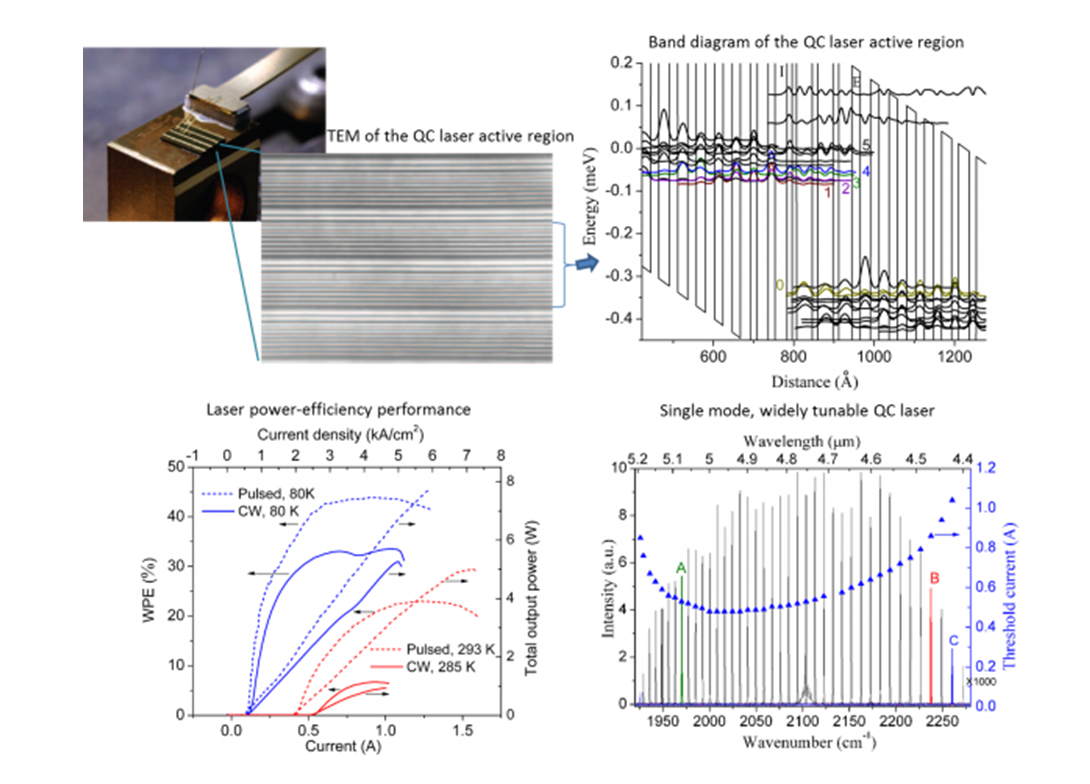Quantum devices based on semiconductor nanostructures
Semiconductor superlattices, as one example of semiconductor nanostructures, consists of alternating nanometer-thick layers (1 nm to 10 nm) of two different semiconductor materials, for example InGaAs and AlInAs. The flexibility in band engineering of semiconductor super-lattices has enabled novel optoelectronic devices, such as unipolar lasers, infrared detector, modulators, etc.
In our work, we investigate both theoretically and experimentally the carrier transport and optical properties of semiconductor super-lattice structures based on different material systems, design and implement novel devices based on these structures.
- Broadband high performance mid-infrared quantum cascade lasers
Mid-infrared quantum cascade lasers have an active core based on semiconductor super-lattice structures. Relying on a designed staircase of intersubband transitions allows free choice of emission wavelength over the broad wavelength range (3-16 um, as well as THz range) and, in contrast with diode lasers, a low transparency point that is similar to a classical, atomic four-level laser system.

In conventional heterogeneous designs, individual transitions contribute to the lasing at their corresponding wavelengths; therefore the laser spectra is heterogeneous and peak gain is smaller compared to single active region design. Our broadband design is based on multiple transitions between strongly coupled states, we have demonstrated that the design can have high performance as well as homogenously broadening gain spectra[1-2].
1. Y. Yao, X. Wang, J. Fan and C. F. Gmachl, “High performance ‘continuum-to-continuum’ Quantum Cascade lasers with a broad gain bandwidth over 400 cm-1”, Applied Physics Letters, 97, 081115, 2010.
2. Y. Yao, T. Tsai, W.O. Charles, J. Chen, G. Wysocki and C. F. Gmachl, “Broadband Quantum Cascade laser gain medium based on a “continuum-to-bound” active region design”, Applied Physics Letters, 96, 211106, 2010.